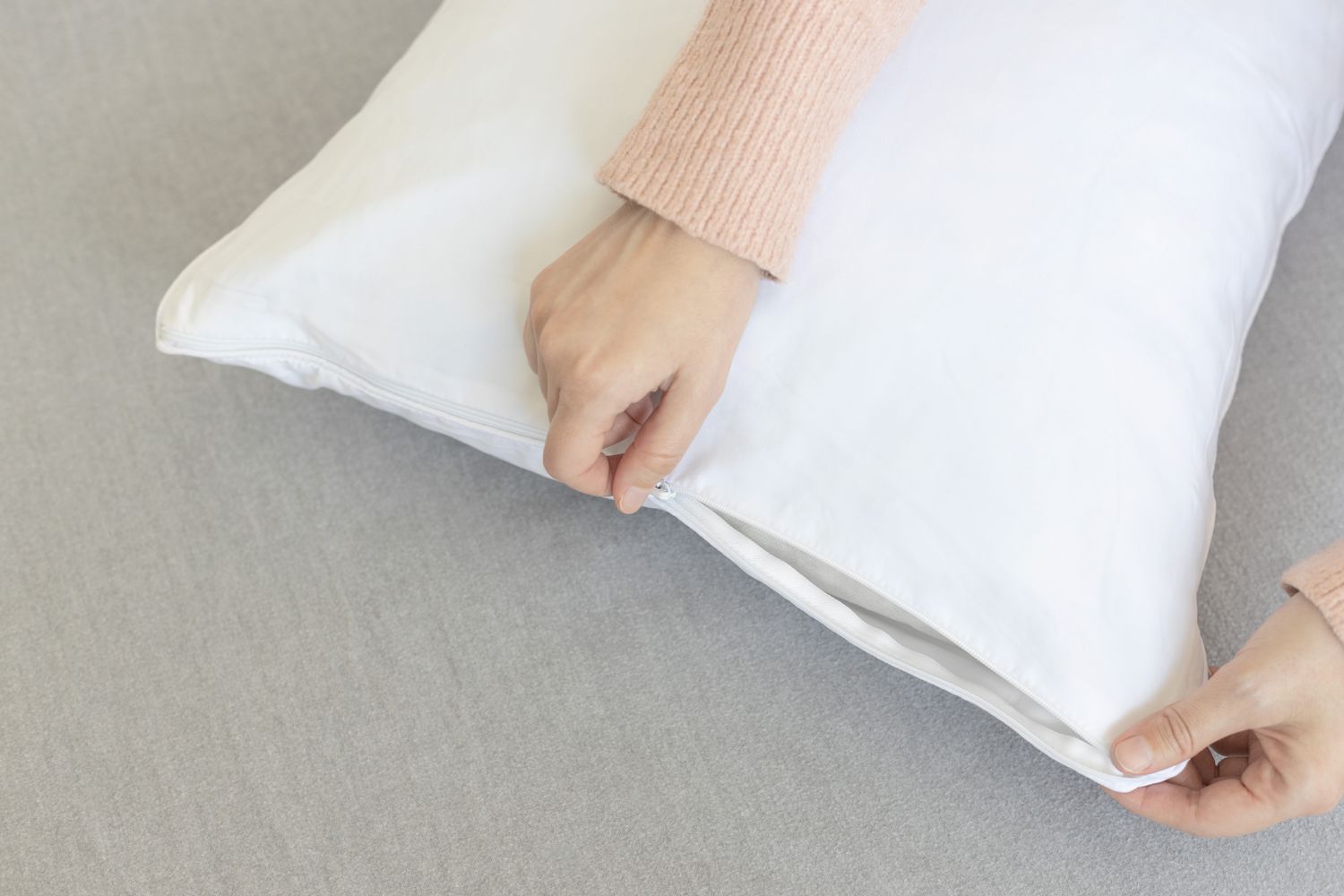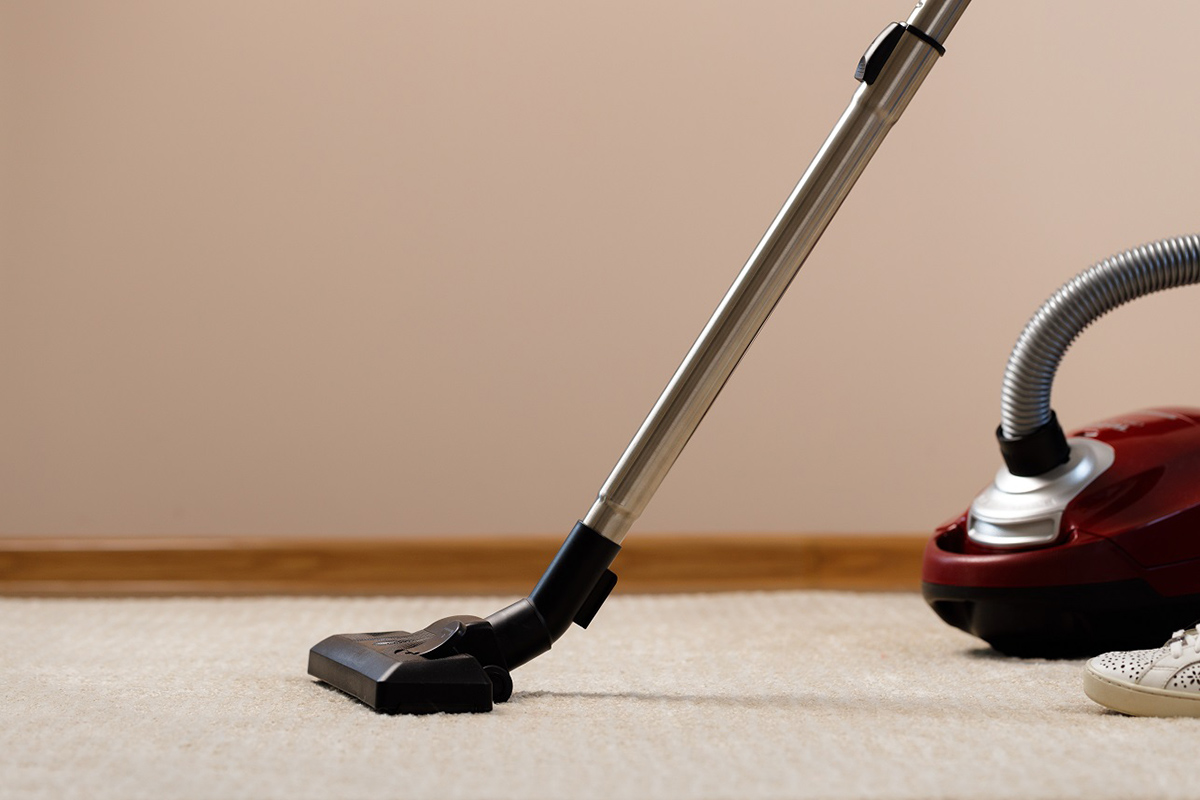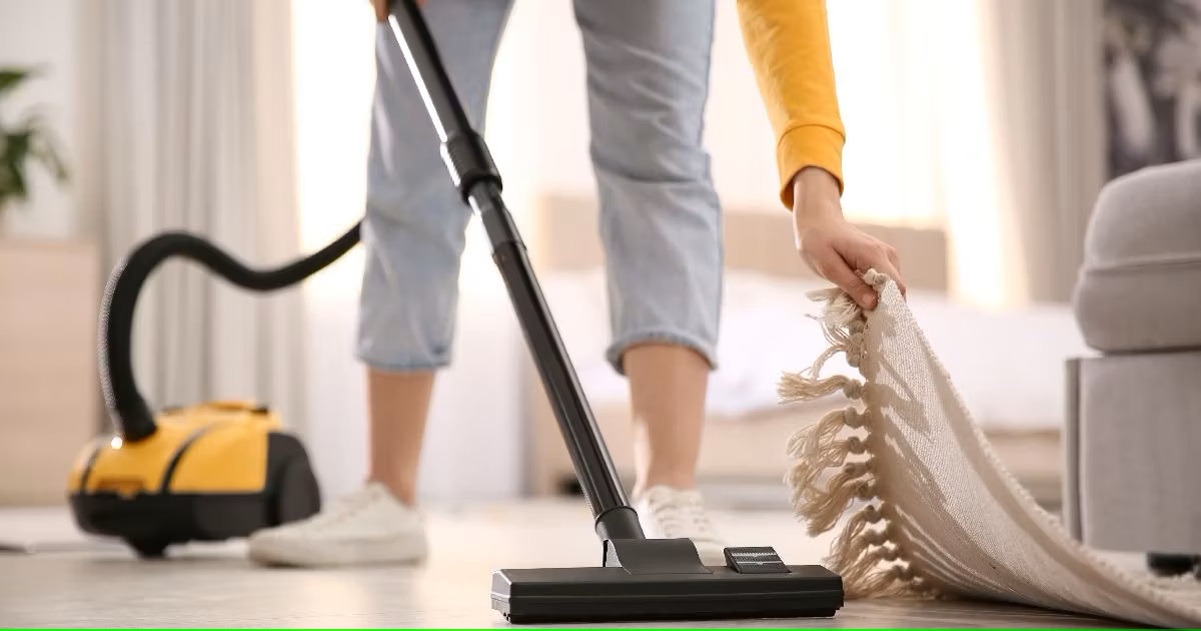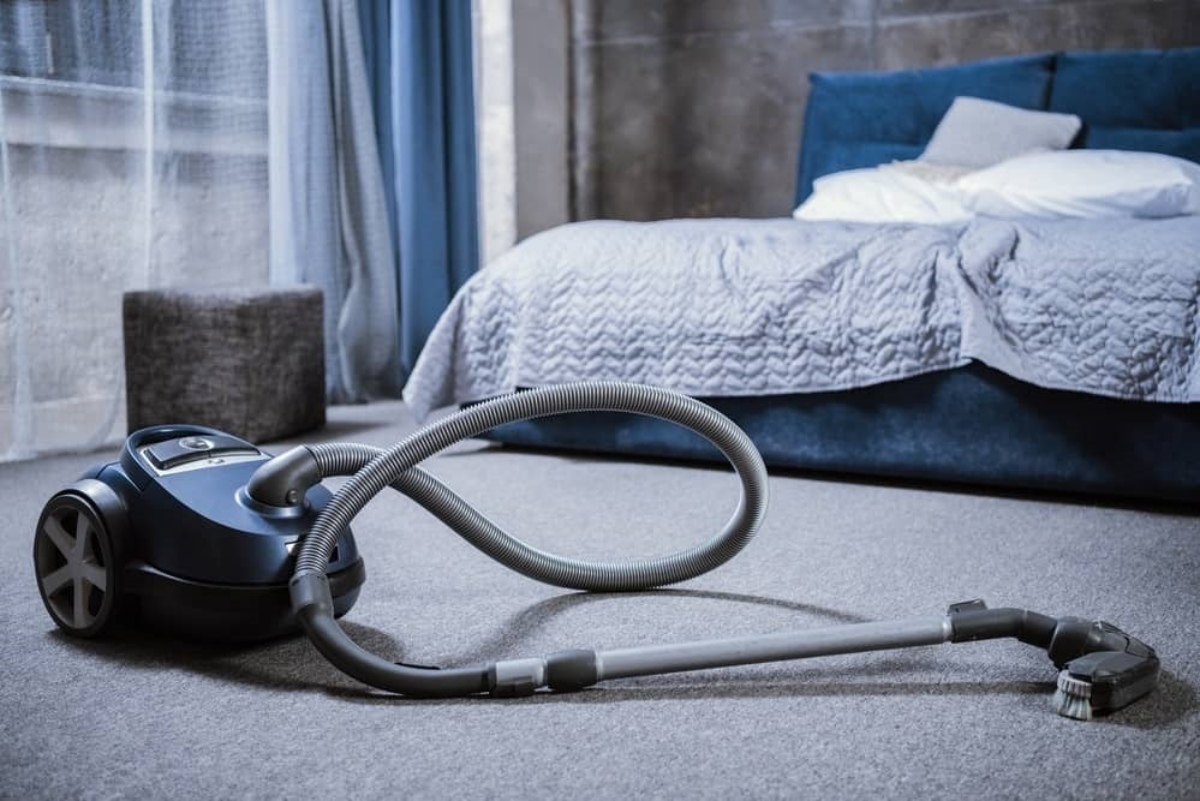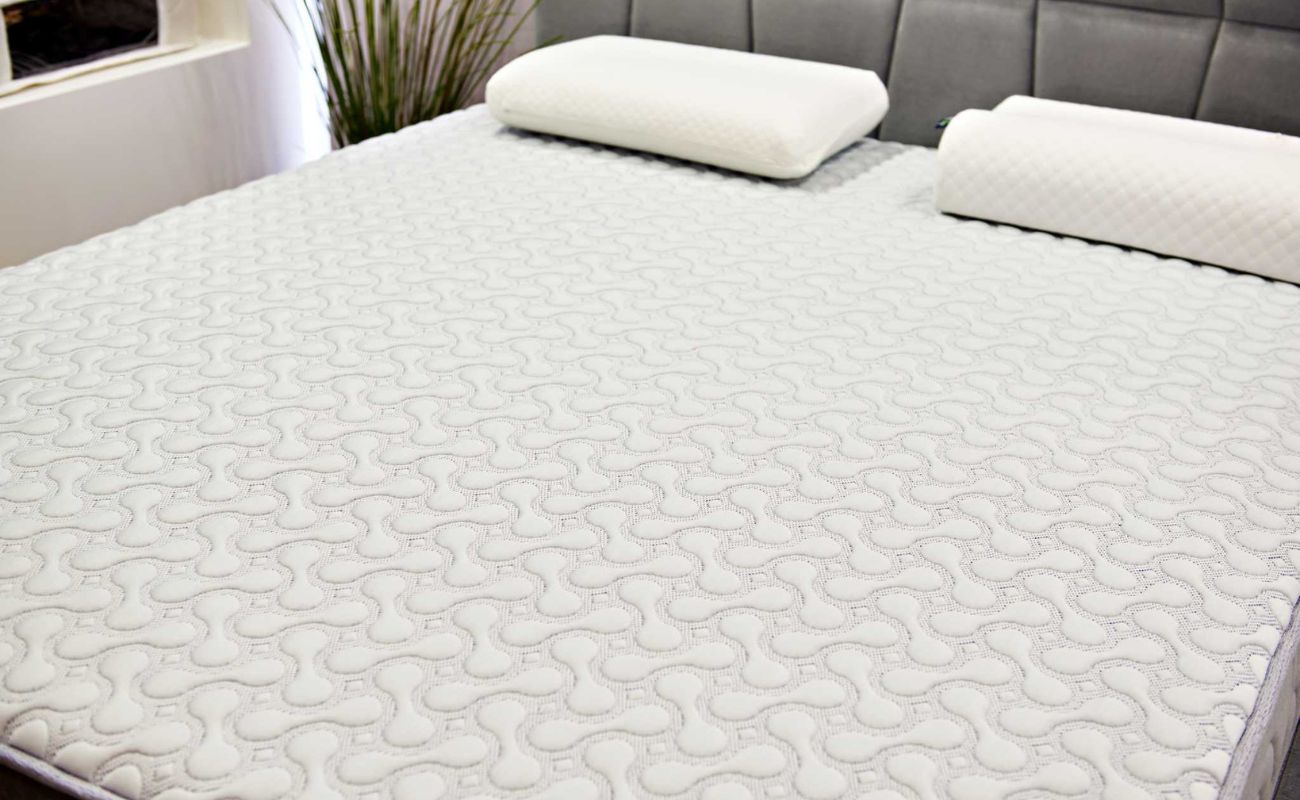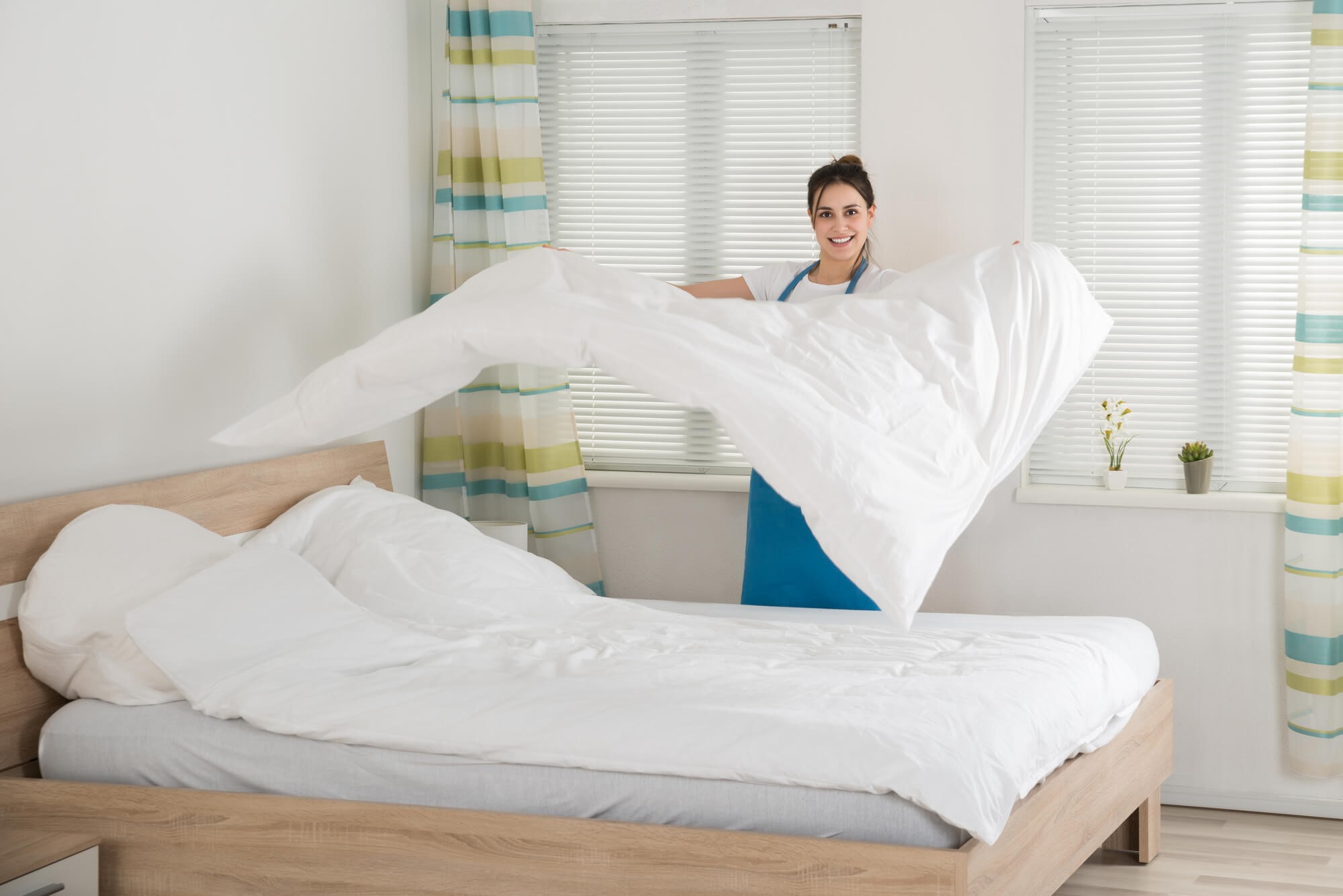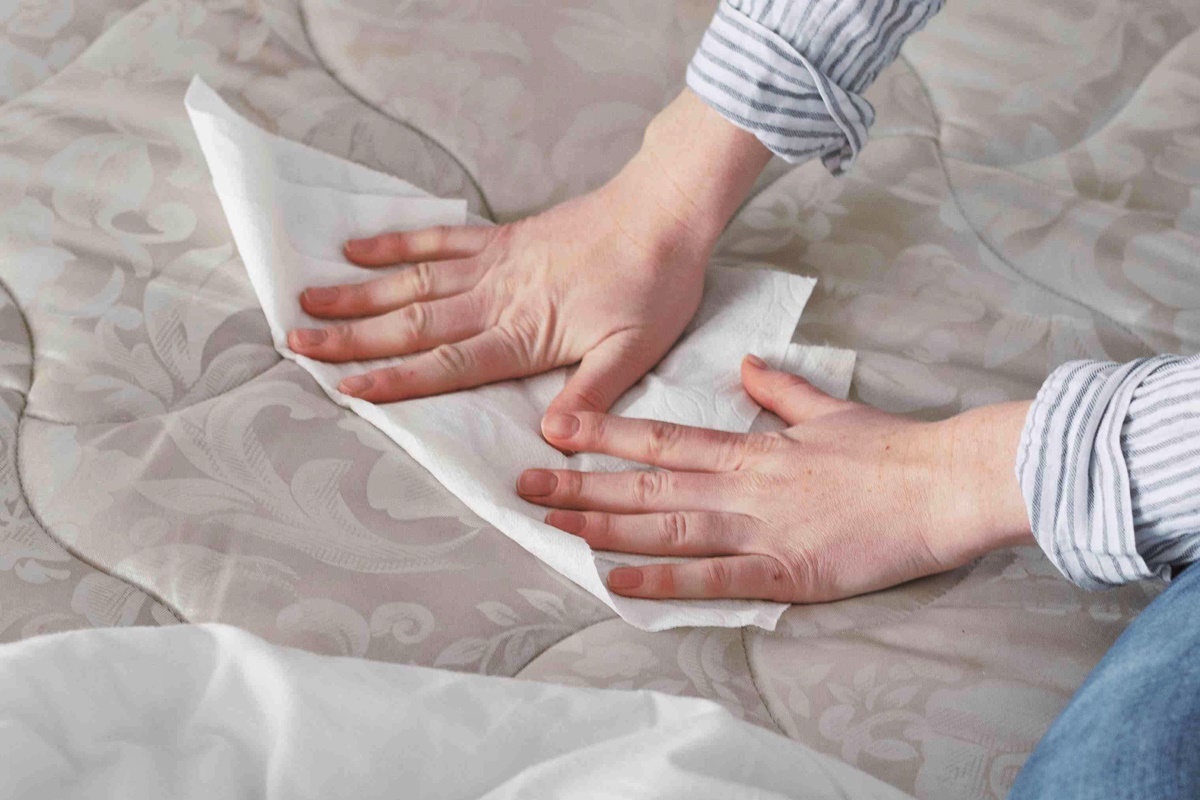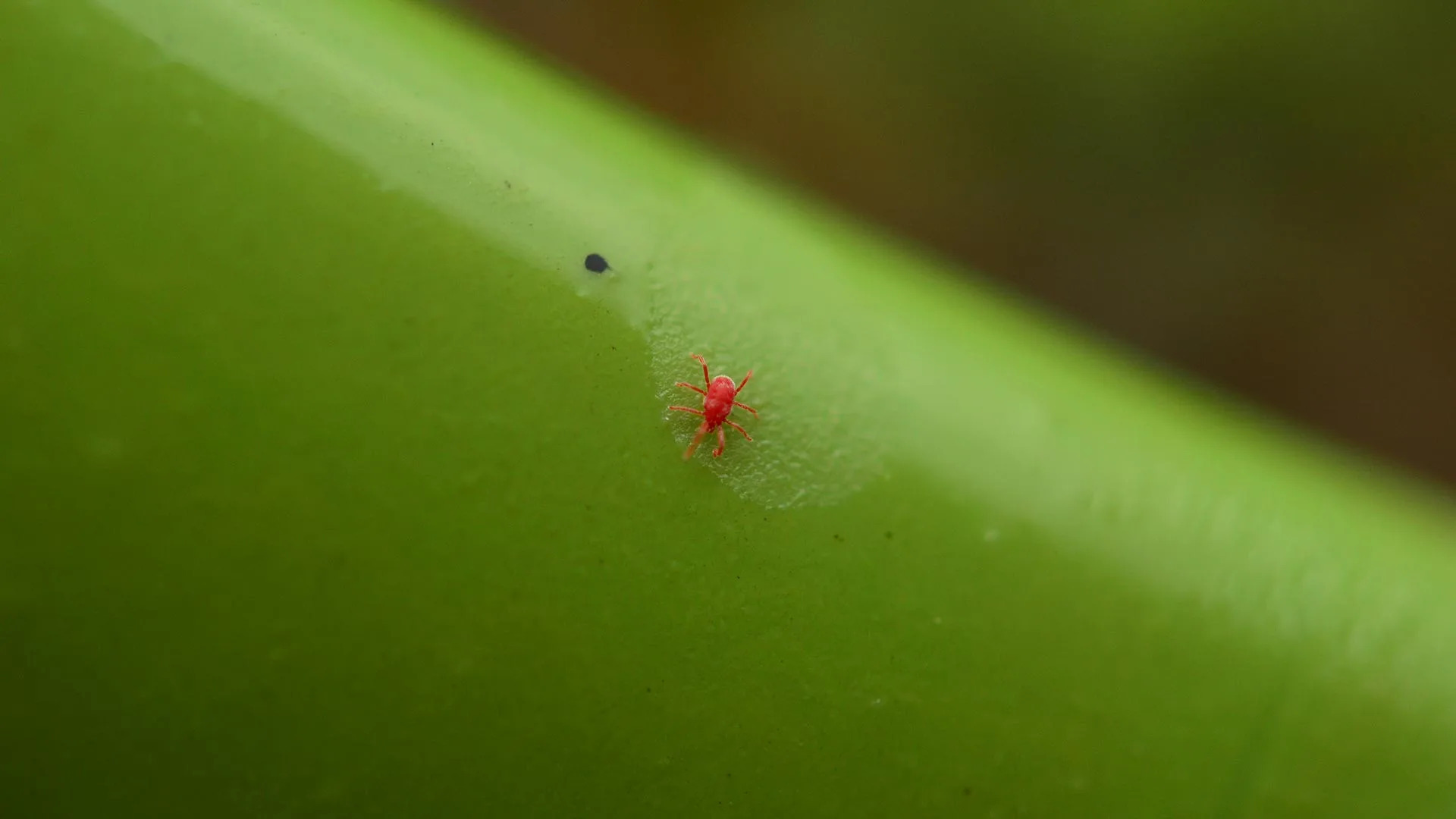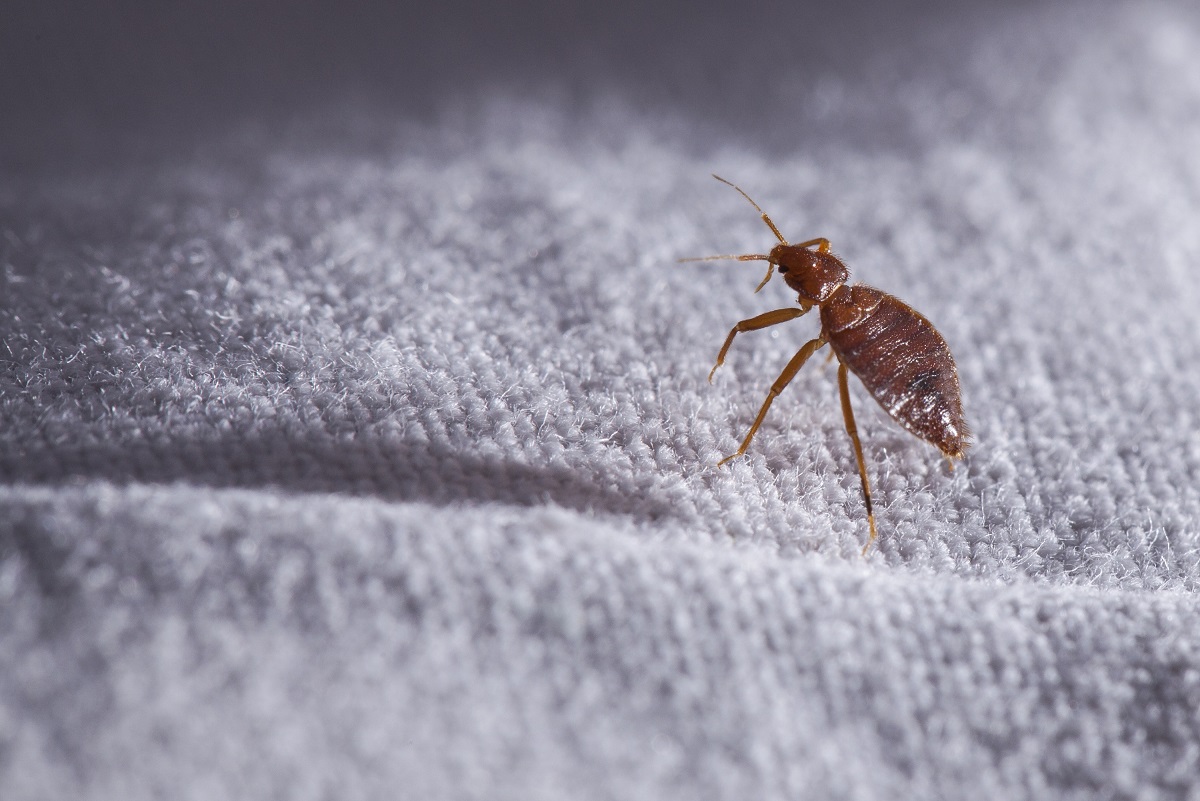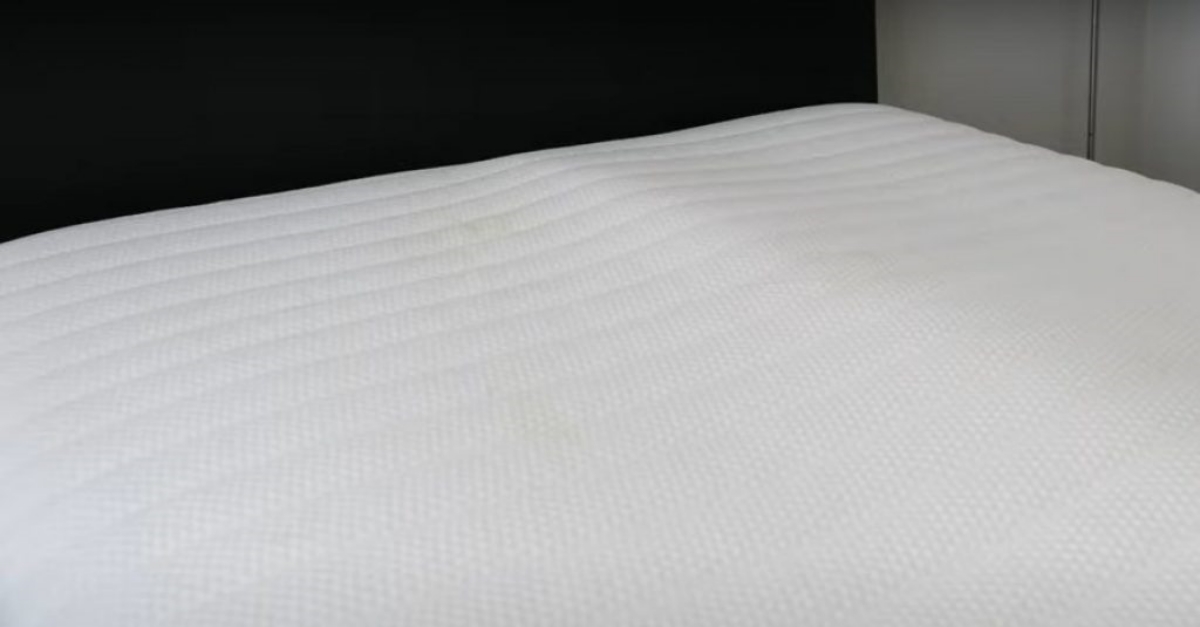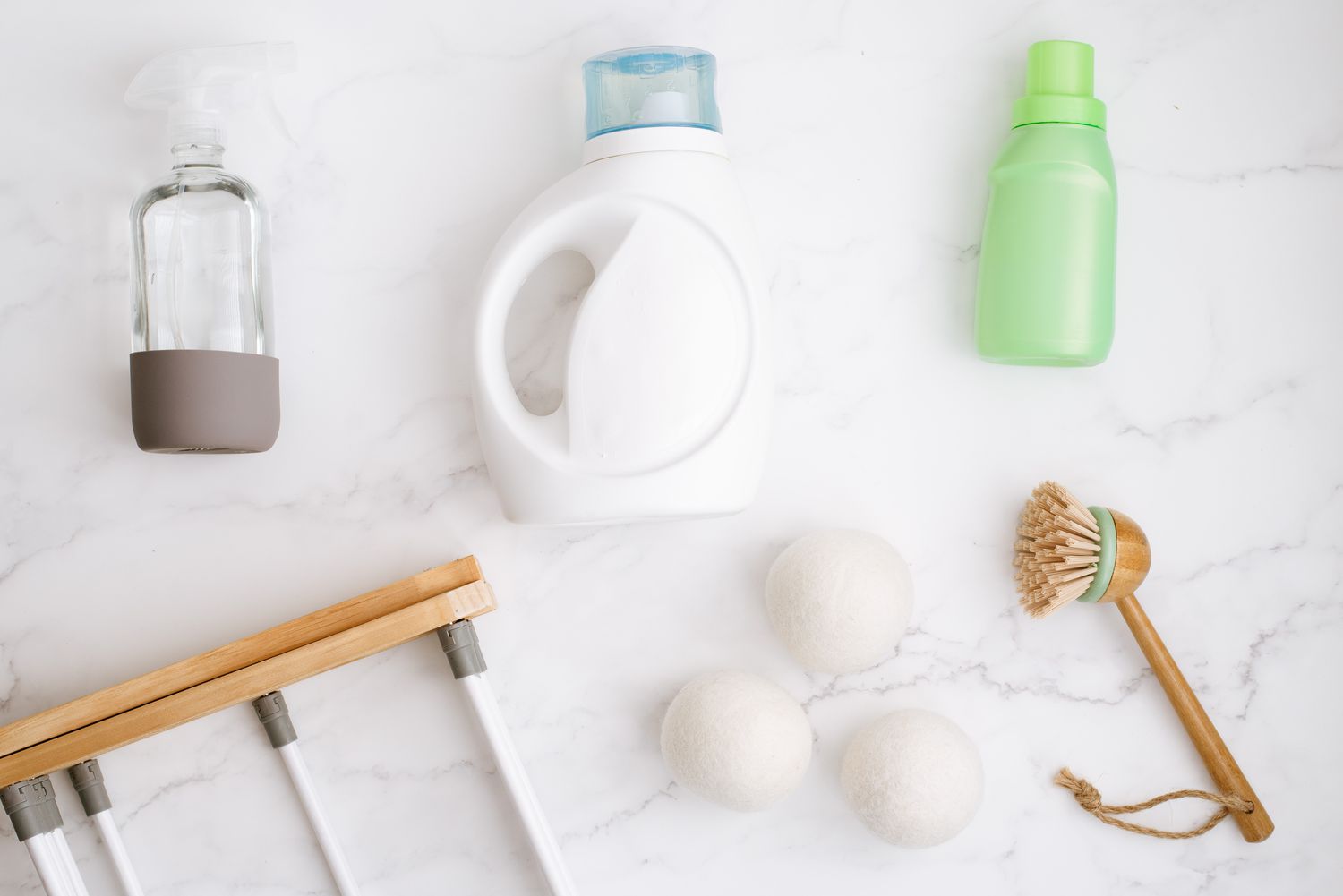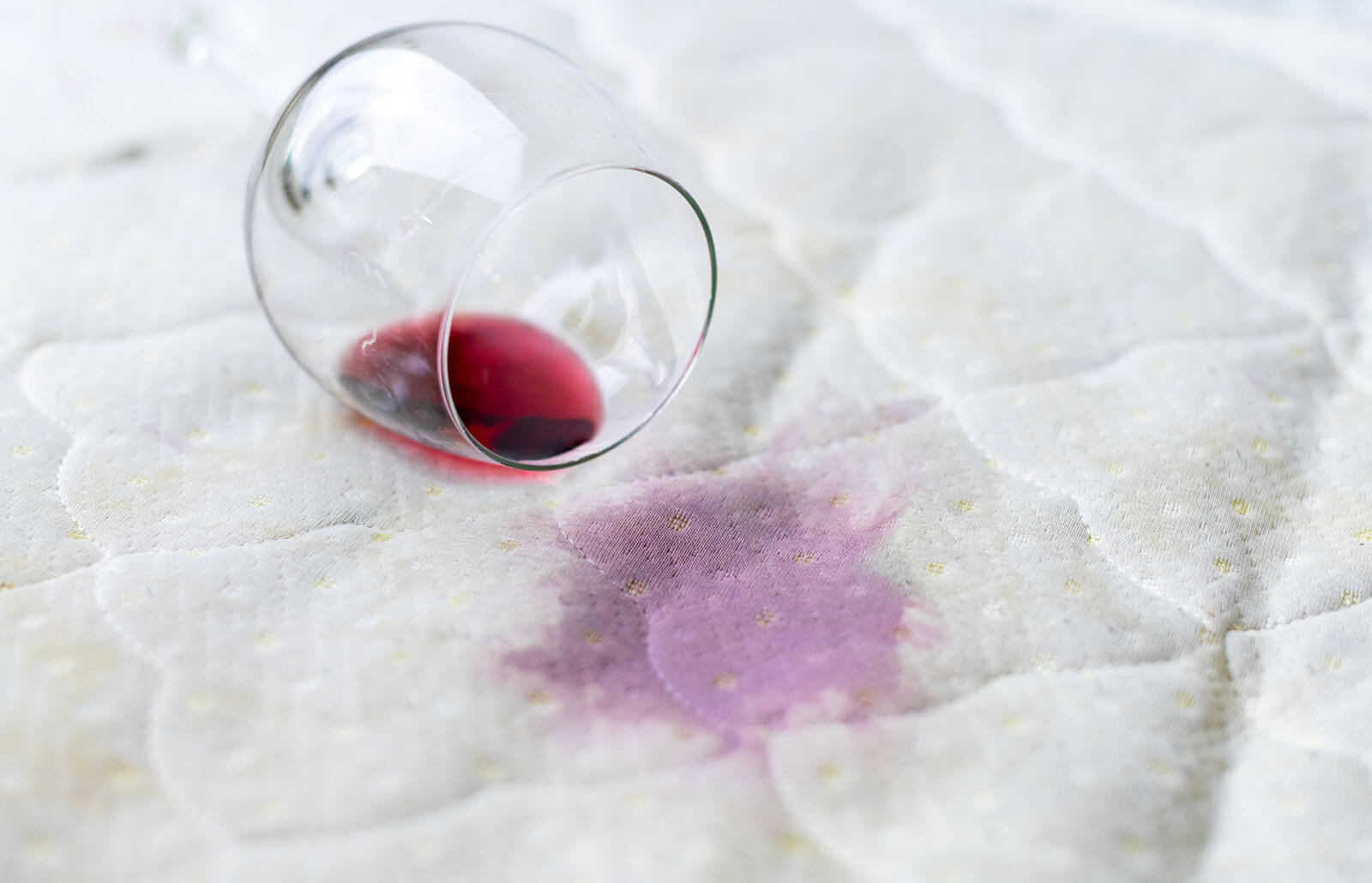Home>Furniture>Bedroom Furniture>How To Get Dust Mites Out Of Your Mattress
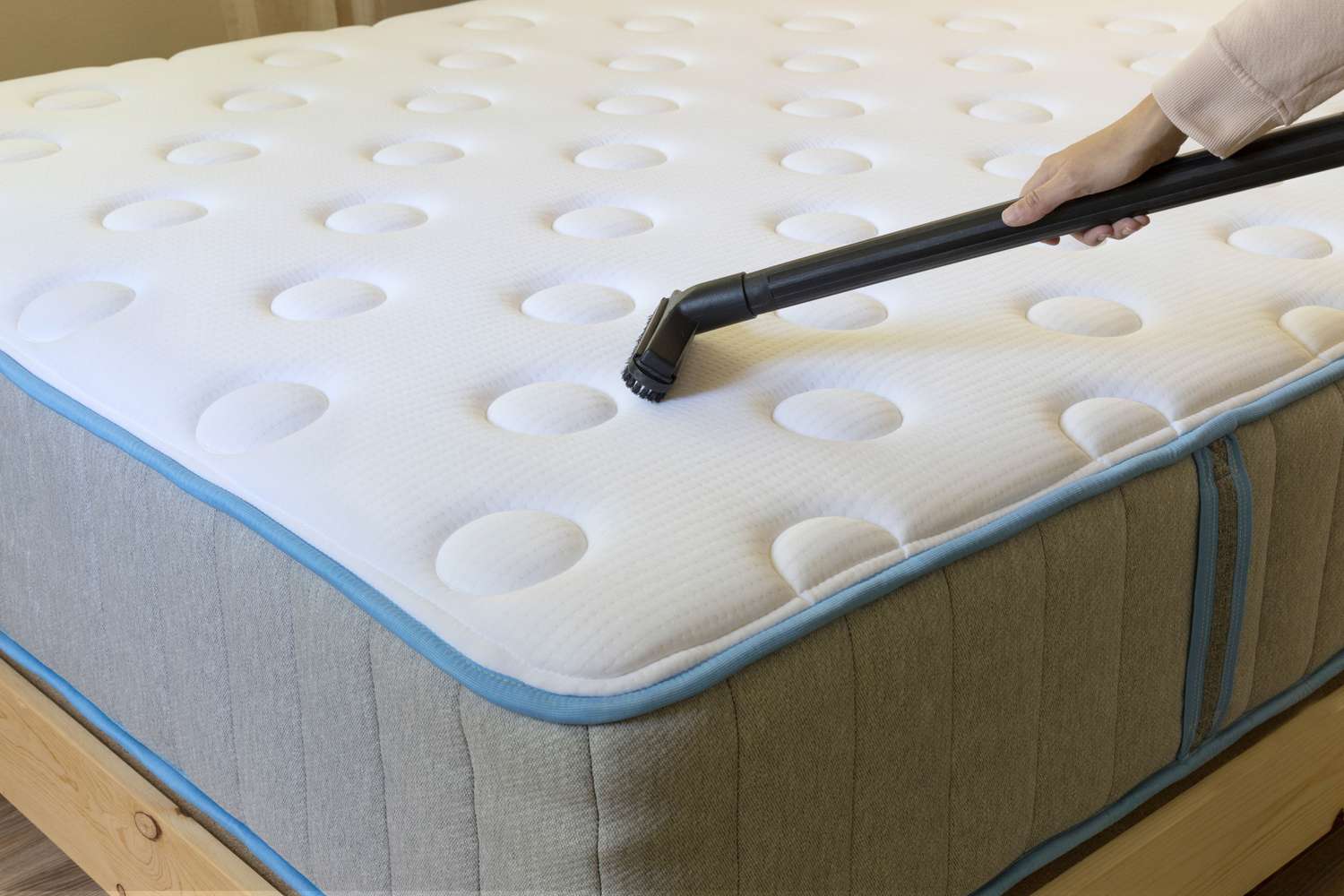

Bedroom Furniture
How To Get Dust Mites Out Of Your Mattress
Modified: January 9, 2024
Learn effective methods to remove dust mites from your mattress and improve the hygiene of your bedroom furniture. Discover simple techniques for a clean and healthy sleep environment.
(Many of the links in this article redirect to a specific reviewed product. Your purchase of these products through affiliate links helps to generate commission for Storables.com, at no extra cost. Learn more)
Introduction
Welcome to our comprehensive guide on how to get rid of dust mites from your mattress. If you have ever experienced allergies, itchy skin, or respiratory issues, then dust mites may be the culprit. These microscopic creatures are commonly found in our households, particularly in our beds, feeding on dead skin cells. While they are virtually invisible to the naked eye, their presence can be detrimental to our health.
In this article, we will delve into the world of dust mites, discuss how to identify their presence in your mattress, and provide effective methods to eliminate them. We will also explore natural remedies to rid your mattress of dust mites, as well as additional tips to keep your sleeping environment clean and free of these pesky critters.
Understanding dust mites and their habits is crucial in taking the necessary steps to eradicate them from your mattress. These tiny arachnids thrive in warm and humid environments, making mattresses the perfect breeding ground. They have a feeding cycle of about three months and can produce a significant amount of waste during that time. These waste particles can trigger allergic reactions in sensitive individuals, causing symptoms such as sneezing, coughing, watery eyes, and skin irritation.
By identifying the signs of a dust mite infestation early on, you can take proactive measures to get rid of them and improve your overall sleep quality and well-being. So, if you’re ready to banish these unwelcome guests from your mattress, let’s dive in!
Key Takeaways:
- Say goodbye to dust mites by deep cleaning your mattress with steam, vacuuming, and natural remedies like essential oils and diatomaceous earth. Regular maintenance and preventive measures are key to a healthier sleep environment.
- Keep your mattress dust mite-free by washing bedding regularly, reducing humidity, vacuuming, and avoiding clutter. Natural remedies like essential oils and diatomaceous earth can also help control dust mite populations.
Read more: How To Clean Dust Mites From A Mattress
Understanding Dust Mites
Dust mites are microscopic creatures that belong to the arachnid family, along with spiders and ticks. These tiny insects measure only about 0.3 millimeters in size, making them invisible to the naked eye. They thrive in warm and humid environments, with the ideal temperature range for their growth being between 68 to 77 degrees Fahrenheit (20 to 25 degrees Celsius) and the humidity level around 70-80%. These conditions are commonly found in our homes, making our mattresses the perfect habitat for dust mites.
Dust mites feast on dead skin cells, which are shed by humans and pets. Since we spend a significant amount of time in bed, our mattresses become a veritable feast for these microscopic pests. Furthermore, the average person can shed up to 1.5 grams of skin per day, providing an ample food source for dust mites. In fact, an average mattress can be home to millions of dust mites, making it a potential breeding ground for allergens.
It’s important to note that dust mites themselves are not allergenic, but their feces and body fragments can trigger allergic reactions in susceptible individuals. When dust mite waste particles become airborne and are inhaled, they can cause a range of symptoms, including nasal congestion, sneezing, coughing, wheezing, itchy or watery eyes, and skin irritation. These symptoms can be particularly problematic for individuals with asthma or allergies.
While dust mites pose a health risk, it’s important to remember that they are a natural part of our environment and cannot be completely eliminated. However, by implementing regular cleaning and maintenance practices, you can significantly reduce their numbers and alleviate the associated health issues.
Identifying Dust Mite Infestation in Your Mattress
Identifying a dust mite infestation in your mattress is crucial in order to take the necessary steps to eliminate them and improve the hygiene of your sleeping environment. While dust mites themselves are not visible to the naked eye, there are telltale signs that can indicate their presence. Here are some common indicators of a dust mite infestation:
- Allergies and respiratory symptoms: If you wake up with nasal congestion, sneezing, wheezing, or coughing, it could be a sign of dust mite allergies. Dust mite waste particles and body fragments can trigger allergic reactions, particularly in individuals with pre-existing respiratory conditions like asthma.
- Itchy skin: Dust mite allergies can also manifest as itchy skin. If you notice redness, itchiness, or skin irritation upon waking up, it may be due to dust mite bites or exposure to their waste particles.
- Visible signs of infestation: While you cannot see dust mites themselves, you may notice small white or tan-colored particles on your mattress or bedding. These particles are actually dust mite feces and body fragments. They can accumulate over time and indicate a significant infestation.
- Musty odor: Dust mites produce waste particles that can emit a musty odor. If you detect an unpleasant smell in your bedroom or specifically on your mattress, it could be an indication of a dust mite infestation.
- Dust mite-proof casings: If you have previously invested in dust mite-proof mattress and pillow encasements, you may still notice signs of a dust mite infestation. Over time, these protective covers can become worn out or accidentally torn, allowing dust mites to enter and breed within your mattress.
If you suspect a dust mite infestation, it’s important to take action promptly to prevent further proliferation and minimize allergen exposure. In the next section, we will explore effective methods to eliminate dust mites from your mattress and ensure a cleaner, healthier sleeping environment.
Why It’s Important to Get Rid of Dust Mites
Getting rid of dust mites in your mattress is not just about maintaining cleanliness; it is essential for your overall health and well-being. Here are some key reasons why it’s important to eliminate dust mites:
- Allergy relief: Dust mites are a common allergen, and their waste particles can trigger allergic reactions in sensitive individuals. By reducing the dust mite population in your mattress, you can alleviate symptoms such as sneezing, coughing, watery eyes, and respiratory issues. This is especially important for individuals with asthma or other respiratory conditions, as dust mites can worsen their symptoms.
- Better sleep quality: Dust mites can disrupt your sleep by causing itchiness, discomfort, and congestion. By eliminating them from your mattress, you create a cleaner and more comfortable sleeping environment, allowing for a more restful sleep.
- Improved indoor air quality: Dust mites not only reside in your mattress but also contribute to the dust and allergen levels in your home. As they multiply and produce waste particles, these allergens can become airborne and circulate throughout your living space. By reducing the dust mite population, you can improve the overall indoor air quality.
- Prevention of secondary infections: Dust mite allergies can weaken your immune system and make you more susceptible to other infections. By minimizing dust mite exposure and keeping your mattress clean, you reduce the risk of developing secondary infections and respiratory illnesses.
- Longer mattress lifespan: Dust mites can contribute to the deterioration of your mattress over time. Their waste particles and enzymes can break down the materials and affect the structural integrity of the mattress. By removing dust mites, you can help prolong the lifespan of your mattress and ensure its optimal performance.
Overall, eliminating dust mites from your mattress is crucial for maintaining a healthy and allergen-free sleeping environment. Regular cleaning and preventive measures will not only improve your quality of sleep but also minimize the risk of allergies, respiratory issues, and other health complications associated with dust mites.
Preparing Your Mattress for Cleaning
Before you begin the process of deep cleaning your mattress to eliminate dust mites, it’s important to properly prepare it. Taking a few simple steps will ensure that you can effectively clean your mattress and prevent further infestation. Here are some essential tasks to complete before cleaning:
- Strip the bed: Remove all bedding, including sheets, pillowcases, and mattress protectors. Wash these items separately in hot water to kill any dust mites and remove allergens.
- Vacuum the mattress: Use a vacuum cleaner with an upholstery attachment to thoroughly vacuum the entire surface of the mattress. Pay close attention to the seams, edges, and crevices where dust mites can hide. This will help remove surface dust, dead skin cells, and any loose debris.
- Spot clean stains: If there are any visible stains on your mattress, carefully spot clean them using a mild detergent or a mixture of baking soda and water. Gently blot the stain, being careful not to saturate the mattress. Allow the spot to air dry completely before moving on to the next step.
- Expose the mattress to sunlight: Dust mites thrive in moist environments, and exposing your mattress to direct sunlight can help kill them. If possible, move your mattress to a sunny location or open the windows in your bedroom to allow natural sunlight to penetrate the mattress. UV rays from the sun have a germicidal effect, reducing the dust mite population.
- Reduce humidity: Dust mites flourish in high humidity environments, so it’s important to control the humidity level in your bedroom. Use a dehumidifier or an air conditioner to keep the humidity below 50%. This will make the environment less favorable for dust mites to thrive.
- Inspect and repair mattress encasements: If you have dust mite-proof mattress encasements or covers, check them for any damages or tears. Repair or replace them as necessary to ensure a tight seal and prevent dust mites from entering or escaping the mattress.
By following these preparations, you create an optimal environment for deep cleaning your mattress and effectively eradicating dust mites. Once your mattress is ready, you can move on to the next step of deep cleaning methods for removing dust mites.
To get dust mites out of your mattress, wash all bedding in hot water, vacuum the mattress regularly, and consider using a dust mite-proof cover.
Read more: How To Kill Dust Mites In Carpet
Deep Cleaning Methods for Removing Dust Mites
Deep cleaning your mattress is essential for eliminating dust mites and their allergens. By implementing the following methods, you can effectively remove dust mites and create a healthier sleeping environment:
- Steam cleaning: Using a steam cleaner is an effective method to kill dust mites and remove allergens from your mattress. The high temperature of the steam kills the mites, while the moisture helps to loosen and lift any dirt or debris embedded in the fabric. Follow the instructions provided with your steam cleaner and ensure you allow sufficient time for the mattress to dry completely before using it again.
- Vacuuming with a HEPA filter: Regular vacuuming with a vacuum cleaner equipped with a High-Efficiency Particulate Air (HEPA) filter can help remove dust mites and allergens from your mattress. The HEPA filter captures small particles, preventing them from being released back into the air. Vacuum the entire surface of the mattress, paying particular attention to seams, crevices, and edges.
- Baking soda treatment: Baking soda is a natural deodorizer and can help absorb moisture from your mattress. Sprinkle a generous amount of baking soda over the surface of the mattress and gently rub it in using a soft brush. Let it sit for several hours or overnight to allow it to absorb odors and moisture. Vacuum the baking soda thoroughly to remove it along with the trapped dust mites and debris.
- Freezing: Extreme cold temperatures can also kill dust mites. If you have a mattress that can fit in your freezer, place it inside a large plastic bag and seal it tightly. Leave it in the freezer for at least 24 hours to ensure the cold temperatures kill the mites. Keep in mind that this method may not be suitable for all types of mattresses, so check with the manufacturer before attempting.
- Hydrogen peroxide and vinegar solution: A mixture of hydrogen peroxide and white vinegar can help disinfect and remove stains from your mattress. Mix equal parts of hydrogen peroxide and white vinegar in a spray bottle, and lightly mist the stained areas of the mattress. Let it sit for a few minutes, then blot the area with a clean cloth. Allow the mattress to air dry completely before using it again.
- Professional mattress cleaning: If you prefer to leave the deep cleaning process to the experts, consider hiring a professional mattress cleaning service. They have specialized equipment and cleaning solutions to thoroughly clean and sanitize your mattress, effectively removing dust mites and allergens.
It’s important to note that whichever deep cleaning method you choose, always check the manufacturer’s instructions and guidelines for your specific mattress type to ensure you do not cause any damage. Additionally, allow sufficient time for the mattress to dry completely before adding bedding or using it again.
By regularly implementing these deep cleaning methods, you can significantly reduce the dust mite population in your mattress and enjoy a cleaner, healthier sleep environment.
Natural Remedies to Eliminate Dust Mites
If you prefer to use natural methods to eliminate dust mites from your mattress, there are several effective remedies available. These natural solutions can help you reduce the dust mite population and create a healthier sleeping environment without the use of harsh chemicals. Here are some natural remedies to consider:
- Essential oils: Certain essential oils have antimicrobial properties that can help kill dust mites. Tea tree oil, eucalyptus oil, and lavender oil are particularly effective. Dilute a few drops of essential oil in water and spray it onto your mattress. Let it air dry completely before using the mattress again. Be cautious if you have pets, as some essential oils can be toxic to them.
- Diatomaceous earth: Food-grade diatomaceous earth is a natural powder made from fossilized algae. It is safe to use around humans and pets but deadly to dust mites. Sprinkle a thin layer of diatomaceous earth over your mattress, let it sit for a few hours, then vacuum it thoroughly. The small particles of diatomaceous earth will help dehydrate and kill the dust mites.
- Baking soda and essential oil mixture: Combine baking soda with a few drops of essential oil, such as lavender or tea tree oil, to create a natural dust mite repellent. Sprinkle the mixture evenly over your mattress and let it sit for a few hours. Vacuum the mattress thoroughly to remove the baking soda and any trapped dust mites.
- Washing with hot water: Dust mites cannot survive extremely hot temperatures. Wash your bedding, including sheets, pillowcases, and mattress protectors, in hot water (at least 130°F or 54°C) to kill the dust mites. Dry them on high heat or in direct sunlight to ensure they are completely free of mites.
- Freezing: Similar to the deep cleaning method, freezing can also be used as a natural remedy to kill dust mites. If your mattress can fit in the freezer, seal it in a plastic bag and place it in the freezer for 24 hours. The extreme cold temperatures will kill any dust mites present. Make sure to check with the manufacturer to ensure this method is suitable for your mattress.
- Allergen-proof covers: Investing in allergen-proof mattress and pillow covers can provide long-term protection against dust mites. These covers create a barrier, preventing dust mites from entering your mattress. Look for covers that are specifically designed to be allergen-proof and have a pore size of less than 10 microns to ensure they are effective in blocking dust mites.
Remember to regularly implement these natural remedies and preventive measures to effectively control the dust mite population in your mattress. Consistency is key to maintaining a dust mite-free sleeping environment.
Additional Tips for Keeping Your Mattress Dust Mite-Free
In addition to deep cleaning your mattress and using natural remedies to eliminate dust mites, there are several other tips you can follow to keep your mattress free from these pesky critters. By incorporating these practices into your regular routine, you can minimize the risk of dust mite infestation and maintain a cleaner, healthier sleeping environment. Here are some additional tips to consider:
- Wash bedding regularly: Wash your bedding, including sheets, pillowcases, and mattress protectors, at least once a week in hot water. This will help kill any dust mites and remove allergens. Make sure to dry them completely before putting them back on the mattress.
- Vacuum regularly: Vacuum not only the surface of your mattress but also your bedroom floor and upholstery. Use a vacuum cleaner with a HEPA filter to effectively trap dust mites and their allergens. Aim to vacuum at least once a week, paying attention to areas around the bed, furniture, and curtains.
- Reduce humidity: Dust mites thrive in humid environments, so it’s important to control the humidity in your bedroom. Use a dehumidifier to keep the humidity between 30 to 50 percent. This will create an environment that is less favorable for dust mites to survive and reproduce.
- Avoid eating in bed: Food particles can attract dust mites, so it’s best to avoid eating in bed. Crumbs and spills provide a food source for the mites and can lead to infestation. If you must have a snack in bed, make sure to clean up any crumbs immediately.
- Rotate and flip your mattress: Regularly rotate and flip your mattress to even out wear and tear. This will also help prevent dust mites from settling in one area of the mattress for an extended period. Follow the manufacturer’s guidelines for flipping and rotating your specific mattress type.
- Air out your mattress: Whenever possible, open your bedroom windows and let fresh air circulate around your mattress. This can help reduce moisture and discourage dust mites from thriving. Just be cautious if you live in an area with high pollen levels, as open windows may introduce allergens into your sleeping environment.
- Avoid synthetic materials: Opt for natural fiber bedding, such as cotton or bamboo, as synthetic materials can trap moisture and promote dust mite growth. Natural fibers are more breathable and can help create a less hospitable environment for dust mites.
- Avoid excessive clutter: Minimize the amount of clutter in your bedroom, as it can provide hiding places for dust mites. Keep your bedroom clean and decluttered to reduce their hiding spots and make it easier to regularly clean and maintain your sleeping environment.
By following these additional tips, you can significantly reduce the chances of dust mite infestation and create a cleaner, healthier sleeping environment. Consistency and regular maintenance are key to keeping your mattress dust mite-free, so make these practices a part of your ongoing household routine.
Conclusion
Dust mites are microscopic creatures that can cause a range of allergic reactions and respiratory issues. These tiny pests thrive in warm and humid environments, making our mattresses a prime breeding ground. However, by understanding dust mites, identifying their presence, and taking proactive steps to eliminate them, you can create a cleaner and healthier sleeping environment.
In this comprehensive guide, we discussed the importance of getting rid of dust mites and explored various methods to achieve this. We learned how to identify dust mite infestations, why it’s crucial to eliminate them, and how to prepare your mattress for deep cleaning. We also discovered effective deep cleaning techniques, including steam cleaning, vacuuming, and natural remedies such as essential oils and diatomaceous earth.
Additionally, we provided tips for keeping your mattress dust mite-free, such as washing bedding regularly, reducing humidity, vacuuming regularly, and avoiding excessive clutter. These simple practices, when incorporated into your routine, can significantly reduce the risk of dust mite infestation and create a healthier sleep environment.
Remember to regularly maintain and clean your mattress, as well as follow preventive measures like using allergen-proof covers and controlling humidity levels. By taking these steps, you can mitigate the allergens caused by dust mites and improve your sleep quality and overall well-being.
Now armed with the knowledge and techniques outlined in this guide, you can confidently tackle dust mite infestations and create a cleaner, dust mite-free mattress. Enjoy a restful sleep and breathe easier knowing that you have taken proactive measures to minimize dust mites and their impact on your health.
Frequently Asked Questions about How To Get Dust Mites Out Of Your Mattress
Was this page helpful?
At Storables.com, we guarantee accurate and reliable information. Our content, validated by Expert Board Contributors, is crafted following stringent Editorial Policies. We're committed to providing you with well-researched, expert-backed insights for all your informational needs.
